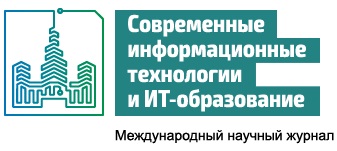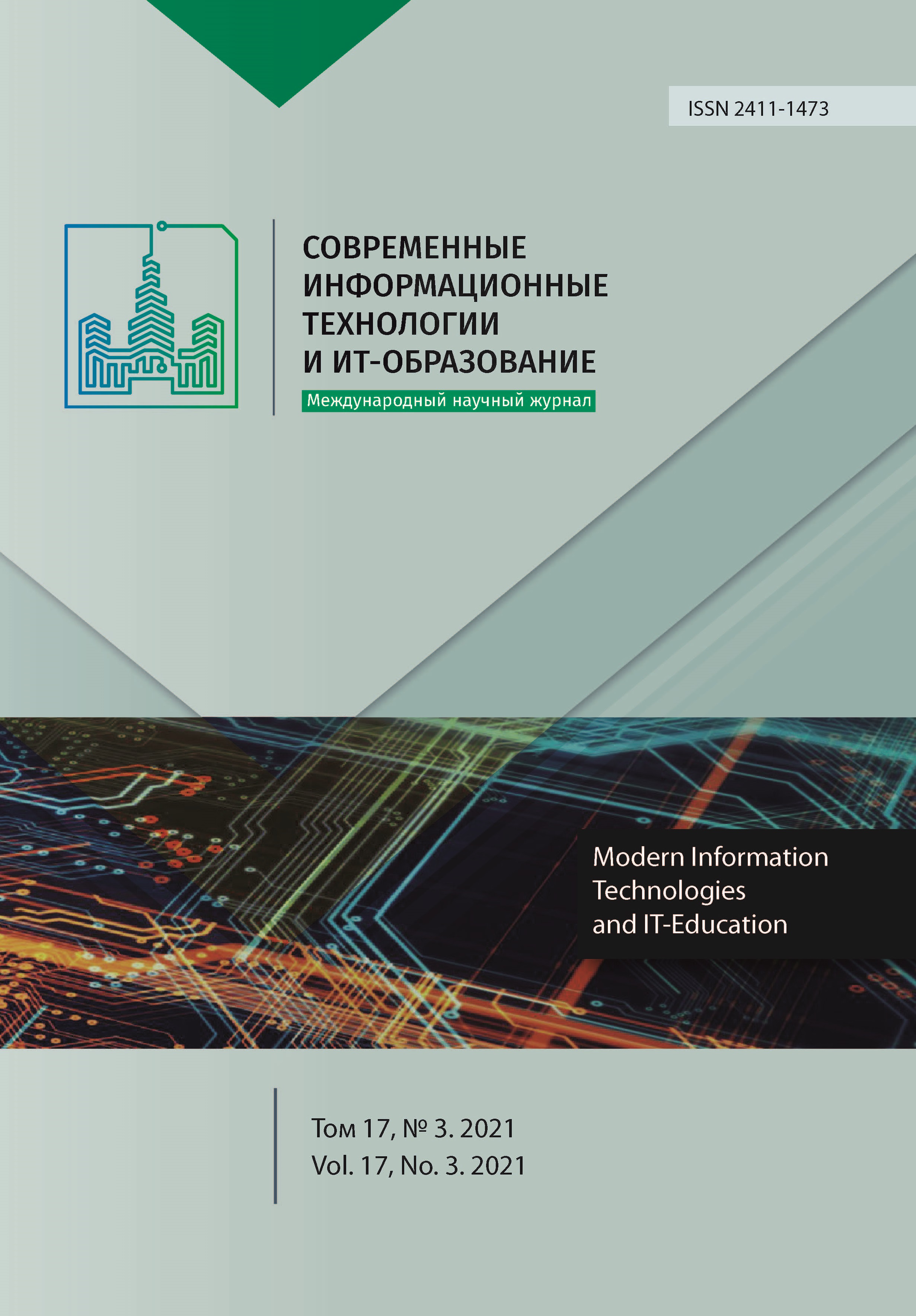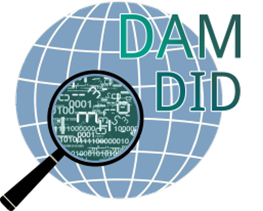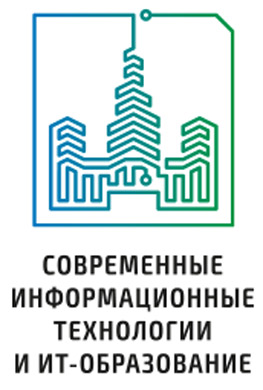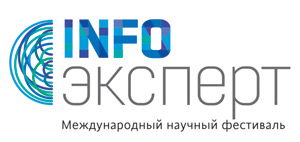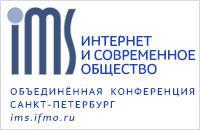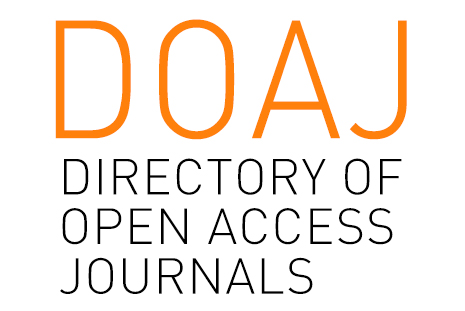Modeling the Deflection of Circular Membrane Effected by a Cargo Positioned Asymmetrically Relative to the Center
Abstract
The paper considers the problem of deflection of a circular membrane under the action of a load located at some distance from its center. The task consists in obtaining experimental data on the membrane deflection and constructing semi-empirical mathematical models based on a relatively small sample of experimental points to determine the magnitude of the deflection of the membrane at any given point on its surface. The deflection of the membrane, depending on the coordinate, can be described with acceptable accuracy by the Laplace equation. In the process of work, an exact solution of the Laplace equation was obtained using a method based on conformal mapping, and an approximate solution was obtained using the neural network modeling method. Calculations were carried out for cases of using two loads of different weights. As a result of the work, the distribution of the deflection of the membrane with known characteristics is obtained depending on the coordinate under the action of a load of a certain mass. In a method based on conformal mapping, the solution is a series. With an increase in the number of terms of the partial sum of the series approximating the solution, it becomes more accurate, but at the same time less resistant to errors introduced by experimental data. The neural network modeling method is more stable and leads to a solution that better agrees with the experiment. The difference between the calculated and experimental data is an order of magnitude smaller compared to the results obtained by the method based on conformal mapping.
References
2. Rosenblatt F. The perceptron: A probabilistic model for information storage and organization in the brain. Psychological Review. 1958; 65(6):386-408. (In Eng.) DOI: https://doi.org/10.1037/h0042519
3. van der Maaten, L., Hinton, G. Visualizing Data Using t-SNE. Journal of Machine Learning Research. 2008; 9:2579-2605. (In Eng.)
4. Lagaris I.E., Likas A., Fotiadis D.I. Artificial neural networks for solving ordinary and partial differential equations. IEEE Transactions on Neural Networks. 1998; 9(5):987-1000. (In Eng.) DOI: https://doi.org/10.1109/72.712178
5. Lazovskaya T., Tarkhov D. Multilayer neural network models based on grid methods. IOP Conference Series: Materials Science and Engineering. 2016; 158:012061. (In Eng.) DOI: https://doi.org/10.1088/1757-899X/158/1/012061
6. Vasilyev A.N., Tarkhov D.A., Tereshin V.A., Berminova M.S., Galyautdinova A.R. Semi-empirical Neural Network Model of Real Thread Sagging. In: Ed. by B. Kryzhanovsky, W. Dunin-Barkowski, V. Redko. Advances in Neural Computation, Machine Learning, and Cognitive Research. NEUROINFORMATICS 2017. Studies in Computational Intelligence. 2018; 736:138-144. Springer, Cham. (In Eng.) DOI: https://doi.org/10.1007/978-3-319-66604-4_21
7. Hairer E., Norsett S.P., Wanner G. Solving Ordinary Differential Equations I. Nonstiff Problem. Springer Series in Computational Mathematics, vol. 8. Springer, Berlin; 1987. (In Eng.) DOI: https://doi.org/10.1007/978-3-662-12607-3
8. Lazovskaya T.V., Tarkhov D.A., Vasilyev A.N. Parametric Neural Network Modeling in Engineering. Recent Patents on Engineering. 2017; 11(1):10-15. (In Eng.) DOI: https://doi.org/10.2174/1872212111666161207155157
9. Lozhkina O., Lozhkin V., Nevmerzhitsky N., Tarkhov D., Vasilyev A. Motor transport related harmful PM2.5 and PM10: from onroadmeasurements to the modelling of air pollution by neural network approach on street and urban level. Journal of Physics: Conference Series. 2016; 772: 012031. (In Eng.) DOI: https://doi.org/10.1088/1742-6596/772/1/012031
10. Raissi M., Perdikaris P., Karniadakis G. Physics-informed neural networks: A deep learning framework for solving forward and inverse problems involving nonlinear partial differential equations. Journal of Computational Physics. 2019; 378:686-707. (In Eng.) DOI: https://doi.org/10.1016/j.jcp.2018.10.045
11. Han J., Jentzen A., Weinan E. Solving high-dimensional partial differential equations using deep learning. Proceedings of the National Academy of Sciences. 2018; 115(34):8505-8510. (In Eng.) DOI: https://doi.org/10.1073/pnas.1718942115
12. Tarkhov D.A., Vasilyev A.N. Semi-Empirical Neural Network Modeling and Digital Twins Development. Academic Press, Elsevier; 2019. 288 p. (In Eng.) DOI: https://doi.org/10.1016/C2017-0-02027-X
13. Vasilyev A.N., Tarkhov D.A., Tereshin V.A., Berminova M.S., Galyautdinova A.R. Semi-empirical Neural Network Model of Real Thread Sagging. In: Ed by. B. Kryzhanovsky, W. Dunin-Barkowski, V. Redko. Advances in Neural Computation, Machine Learning, and Cognitive Research. Studies in Computational Intelligence. 2018; 736:138-146. Springer International Publishing. (In Eng.) DOI: https://doi.org/10.1007/978-3-319-66604-4_21
14. Vasilyev A.N., Tarkhov D.A. Mathematical Models of Complex Systems on the Basis of Artificial Neural Networks. Nonlinear Phenomena in Complex Systems. 2014; 17(3):327-335. Available at: http://www.j-npcs.org/online/vol2014/v17no3p327.pdf (accessed 20.07.2021). (In Eng.)
15. Egorchev M.V., Tiumentsev Y.V. Semi-Empirical Continuous Time Neural Network Based Models for Controllable Dynamical Systems. Optical Memory and Neural Networks. 2019; 28(3);192-203. (In Eng.) DOI: https://doi.org/10.3103/S1060992X1903010X
16. Degroote J., Vierendeels J., Willcox K. Interpolation among reduced-order matrices to obtain parameterized models for design, optimization and probabilistic analysis. International Journal for Numerical Methods in Fluids. 2010; 63(2):207-230. (In Eng.) DOI: https://doi.org/10.1002/fld.2089
17. Amsallem D., Zahr M., Farhat C. Nonlinear model order reduction based on local reduced-order bases. International Journal for Numerical Methods in Engineering. 2012; 92(10):891-916. (In Eng.) DOI: https://doi.org/10.1002/nme.4371
18. Chaturantabut S., Sorensen D. Nonlinear model reduction via discrete empirical interpolation. SIAM Journal on Scientific Computing. 2010; 32(5):2737-2764. (In Eng.) DOI: https://doi.org/10.1137/090766498
19. Mainini L., Willcox K.E. Sensitivity analysis of surrogate-based methodology for real time structural assessment. Proceedings of the AIAA Modeling and Simulation Technologies Conference (AIAA SciTech 2015). Kissimme, Florida, AIAA; 2015. AIAA Paper 2015-1362. (In Eng.) DOI: https://doi.org/10.2514/6.2015-1362
20. Rasheed A., San O., Kvamsdal T. Digital Twin: Values, Challenges and Enablers From a Modeling Perspective. IEEE Access. 2020; 8:21980-22012. (In Eng.) DOI: https://doi.org/10.1109/ACCESS.2020.2970143
21. Rai R., Sahu C.K. Driven by Data or Derived through Physics? A Review of Hybrid Physics Guided Machine Learning Techniques with Cyber-Physical System (CPS) Focus. IEEE Access. 2020; 8:71050-71073. (In Eng.) DOI: https://doi.org/10.1109/ACCESS.2020.2987324
22. Frank M., Drikakis D., Charissis V. Machine-Learning Methods for Computational Science and Engineering. Computation. 2020; 8(1):15. (In Eng.) DOI: https://doi.org/10.3390/computation8010015
23. Zjavka L., Snáel V. Composing and Solving General Differential Equations Using Extended Polynomial Networks. 2015 International Conference on Intelligent Networking and Collaborative Systems. IEEE Press, Taipei, Taiwan; 2015. p. 110-115. (In Eng.) DOI: https://doi.org/10.1109/INCoS.2015.28
24. Gorev B.V., Lyubashevskaya I.V., Panamarev V.A., Iyavoynen S.V. Description of creep and fracture of modern construction materials using kinetic equations in energy form. Journal of Applied Mechanics and Technical Physics. 2014; 55(6):1020-1030. (In Eng.) DOI: https://doi.org/10.1134/S0021894414060145
25. Kuznetsov E.B., Leonov S.S. Technique for selecting the functions of the constitutive equations of creep and long-term strength with one scalar damage parameter. Journal of Applied Mechanics and Technical Physics. 2016; 57(2):369-377. (In Eng.) DOI: https://doi.org/10.1134/S0021894416020218

This work is licensed under a Creative Commons Attribution 4.0 International License.
Publication policy of the journal is based on traditional ethical principles of the Russian scientific periodicals and is built in terms of ethical norms of editors and publishers work stated in Code of Conduct and Best Practice Guidelines for Journal Editors and Code of Conduct for Journal Publishers, developed by the Committee on Publication Ethics (COPE). In the course of publishing editorial board of the journal is led by international rules for copyright protection, statutory regulations of the Russian Federation as well as international standards of publishing.
Authors publishing articles in this journal agree to the following: They retain copyright and grant the journal right of first publication of the work, which is automatically licensed under the Creative Commons Attribution License (CC BY license). Users can use, reuse and build upon the material published in this journal provided that such uses are fully attributed.
